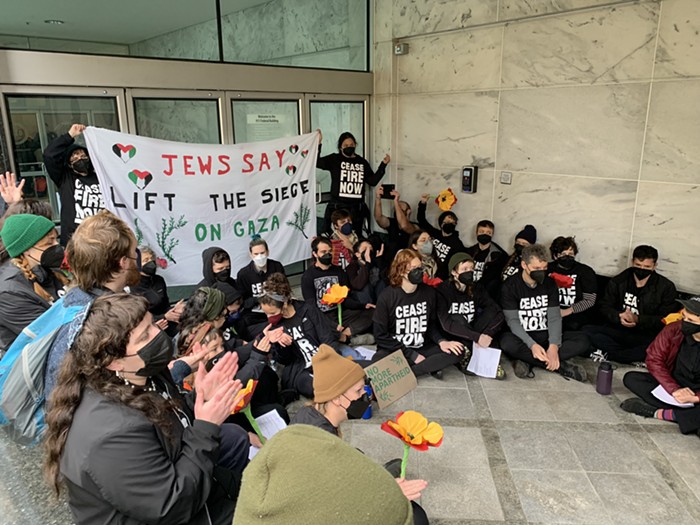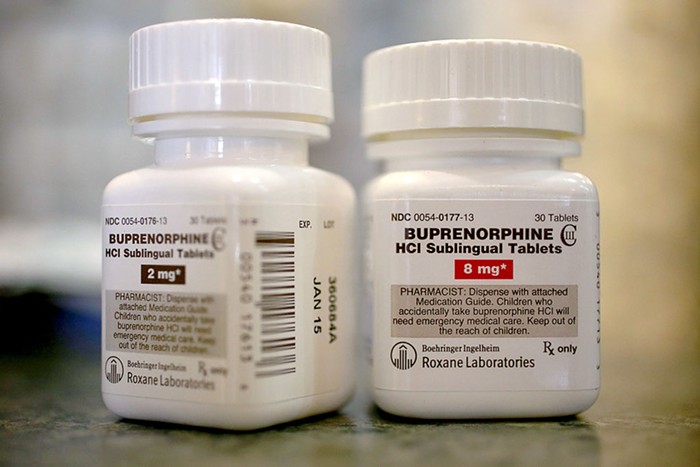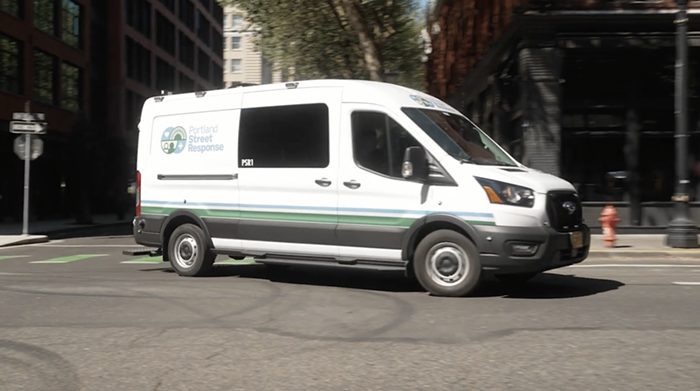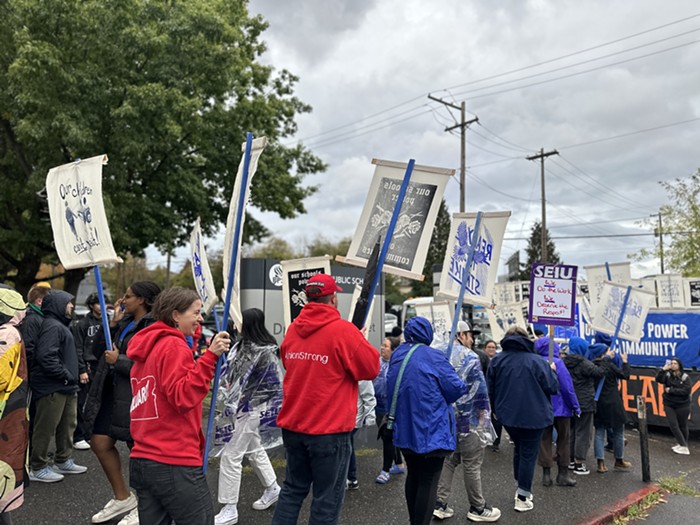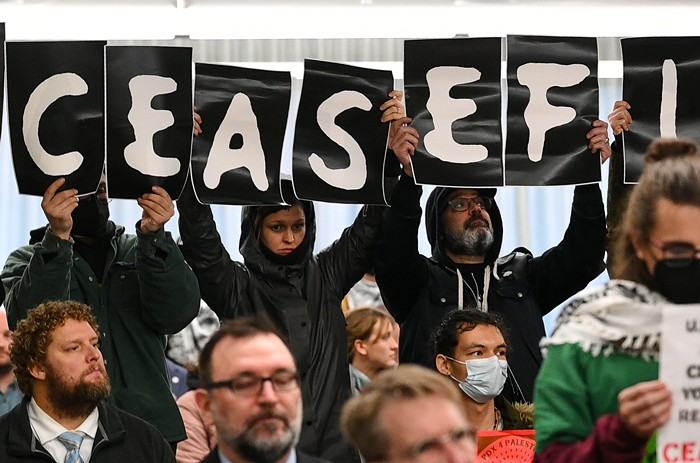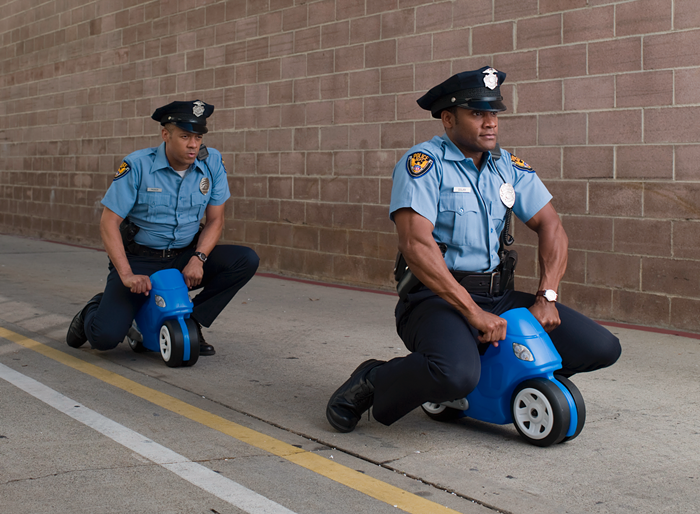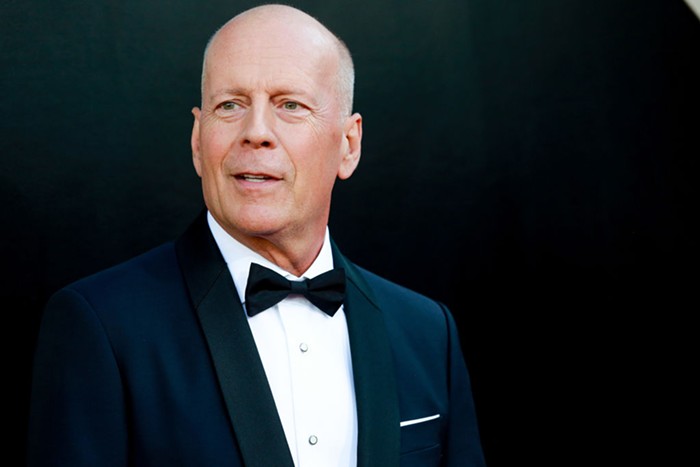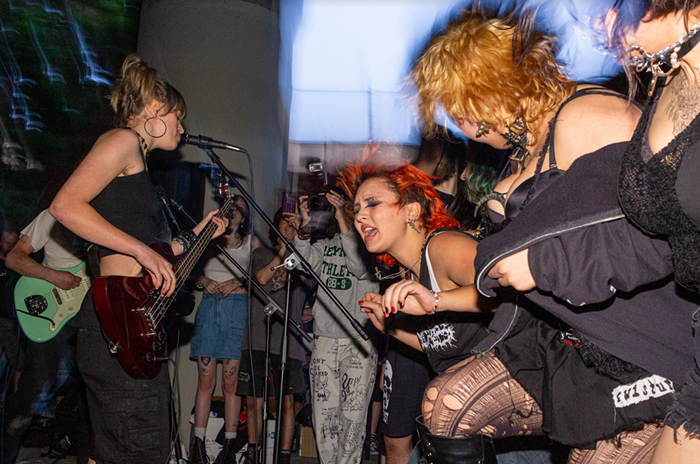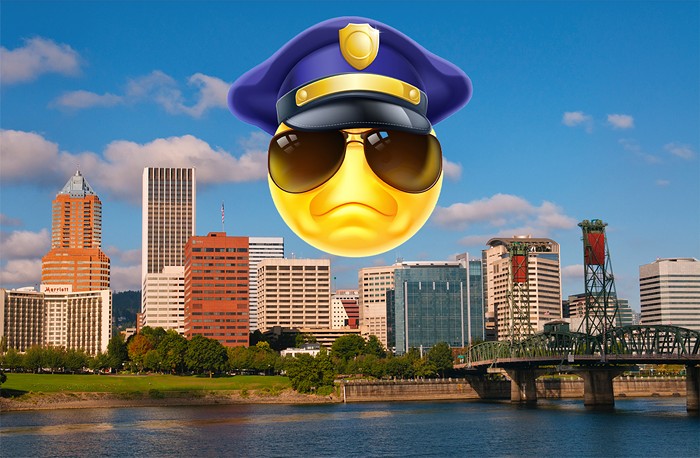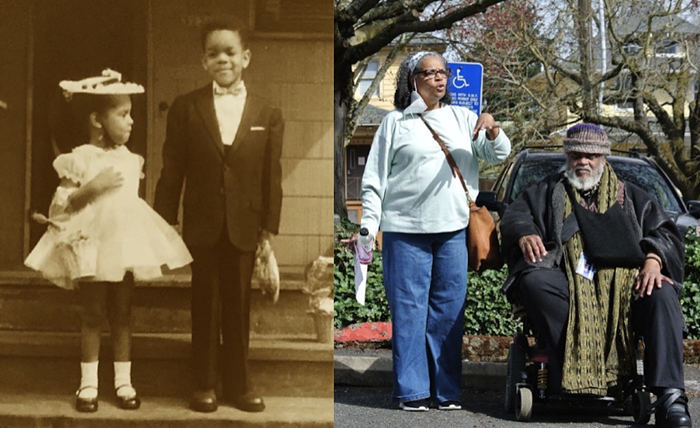BACK IN 2012, amid the lingering haze of Occupy Portland, then-mayoral candidate Charlie Hales told the Mercury something remarkable about how he'd approach crowd control and protest policing if elected.
Relying on his penchant for giving good quotes, he answered our questions about de-escalation by suggesting he'd paint the cops' riot gear pink.
He was partly joking, sure. But the sentiment was unmistakable... and sensible.
Protests and marches that are tipping toward aggression almost always seem to tumble once the riot cops show up, backed by their mates holding gas launchers and less-lethal shotguns. It's the opposite of de-escalation.
Hales' japery about friendlier-seeming pink gear, uttered in front of several rivals during an endorsement interview, was a nod to that idea.
And it's not just anecdotal. It's also academic. The University of California released a study this summer confirming that the presence of riot cops in military formations, during protests where jaywalking and traffic-blocking are the biggest affronts, often makes things worse instead of better.
So how has Hales responded to days and days of marches over the death of Michael Brown in Ferguson, Missouri—the biggest and most persistent protests Portland's seen since the Occupy movement held three city parks in 2011?
He hasn't painted the riot gear pink. He hasn't held the riot cops at bay. In fact, it seems the police bureau's added a few new tricks under Hales' administration: flash-bang grenades and the threat of mass arrests.
Then, on Monday, December 1—after at least 20 complaints hit the city's Independent Police Review division—it was announced that Hales' police bureau has the distinct honor of facing an official investigation over its actions.
Most of those complaints came after the cops cracked down hard on a protest on Saturday, November 29.
Riot cops tossed flash-bang grenades at marchers for the first time in the three years I've been covering protests in this city. I was several feet away from one of the three blasts—and, for a while, Portland sounded like cities beset by actual violence and looting, not mere traffic infractions. Protesters, on social media, have since claimed injuries including burns.
Later that night, a police bureau tired of following and flanking marchers for close to four hours did something else I'd not yet seen in my time reporting in Portland.
Around 11 pm, with no warning, riot cops surrounded protesters at a "die-in" at the deserted corner of SW 2nd and Main. It was an indiscriminate, protest-busting "kettle"—a controversial tactic in which cops surround a large group and refuse to let anyone go.
"Everybody is under arrest," the cops' PA van announced—before instructing everyone to get in the middle of the street, where we were all pushed into the northeast corner of the intersection.
There was no escape. The kettle didn't care that most of the people inside had been lying down on a cold road outside Central Precinct. The kettle, penning us in shoulder to shoulder, didn't care that many of us were legally on the sidewalk when the "arrest" threat was issued. The kettle didn't care that some of the people inside were journalists, like me and others, who'd been covering the march since the rally outside the main jail where Reverend Jesse Jackson was the keynote speaker.
I was eventually released when a sergeant, Richard Stainbrook, recognized me and let me out. That was after several long minutes, and after the bureau had changed its instructions from telling us we were "under arrest"—something most people took literally—to offering us the mercy of a one-by-one release.
Dozens were let go. But 10 people, including a minor, were arrested on charges of disorderly conduct and interfering with a police officer when it was all finished. The bureau hasn't explained, despite many questions, why certain protesters were targeted for arrest while others were not.
The bureau also hasn't explained why two of those 10 arrestees, despite facing the same charges, were given citations that spared them from being booked and processed.
But there are other questions as well.
Based on police reports and other information, the Multnomah County District Attorney's Office has so far declined to arraign any of the arrested protesters. That's significant for a few reasons.
It could be the DA's office doesn't want the hassle of cases that could go to jury trials. It could be prosecutors don't think they can win the cases without more evidence (which they're still open to reviewing). It could be that the cops don't actually want to pursue charges, suggesting the arrests were less about actual bad behavior and more about frustration, and sending a message to activists they aren't playing around anymore.
One of the booked protesters, activist and blogger Hart Noecker, was among the citizen journalists chronicling the march. Noecker has been a strident police critic—writing first about three cops who posted Facebook profile pictures showing a Portland badge ringed by an "I Am Darren Wilson" bracelet.
After his court appearance on Tuesday, December 2, Noecker told the Mercury's Dirk VanderHart that police took the extra step of confiscating his money, phone, and keys as evidence—meaning he wasn't able to access them when he was released on Sunday. Other protesters had essential possessions temporarily stored at the jail and returned to them, he says.
The bureau's muscular approach November 29 followed days of increasing reliance on its riot squads. Monday, November 24, a tiny march seized a few streets around the jail, though it saw a nearly invisible touch by cops. A similarly small Ferguson march late in the summer on NE MLK played out in much the same way.
But a giant march on Tuesday, November 25, crossed several red lines for the cops. Protesters managed to seize two bridges and briefly tangle up Interstate 5, despite batons, police horses, and pepper spray. (Used, in one instance, by Sergeant Kyle Nice—on someone repeatedly swatting a police horse's nose with a sign. Nice is one of the cops involved in the fatal 2006 beating of James Chasse Jr.)
The next day, a decently large march avoided the streets, sticking to sidewalks and following traffic signals—but the riot cops were out all the same, taking no chances, closing bridges and on-ramps just in case protesters decided not to be so polite.
All of which set the tone for Saturday.
The night started around 6 pm with a long rally featuring Reverend Jackson and several other grassroots African American activists. The crowd, almost 1,000 strong, took over the steps of the main jail on SW 3rd and spilled into the street below.
Teressa Raiford, an organizer with Don't Shoot Portland, joined others in explaining again and again why protesters were taking the streets in solidarity with Ferguson. She repeated calls for demonstrators to remain peaceful and nonviolent. And she laid out specific local goals for police reform, biggest among them an independent civilian panel directly in charge of police discipline.
The march finally got going a little before 8 pm. Young black activists were in front, leading chants that changed and shifted on their way to the back of a crowd that stretched, at times, nearly three blocks long.
It was mostly peaceful. And passionate. Except for a few times when it wasn't. And except when the riot cops showed up.
Standoffs nearly erupted at the Broadway and Burnside Bridges, after armored officers pre-emptively shut down traffic and fanned across all lanes. Both times, the cops were like catnip for black bloc marchers, who grabbed barricades and tried to push against the riot lines. But both times, the bulk of the march managed to pull itself away after some internal tug of war.
Then came a weird standoff outside Macy's and the Nines hotel, at SW 6th and Morrison. The march had pulled to a stop at the intersection, tangling MAX traffic and buses along with regular car commuters (many of whom were filming and snapping photos at the curiosity of a march surrounding their vehicles).
One marcher wearing a gray scarf around his face decided to sit down on a police SUV. And then stand on the hood of the SUV. But despite three cops standing right next to him, looking at him, only one tried to grab him. And right when the march was contemplating another move, a crowd surged instead to watch his unchecked antics.
The cops outside the SUV got in and started backing up while the guy was trying to surf on top. The onlookers went from amused to angry, worried the guy might be hurt. Finally he jumped off and ran east to apparent safety—which is about when a riot line moved in and added gas to a smoldering fire.
The crowd surged against the line, shouting things. A police statement says bottles were thrown at the cops, but I didn't see that. The riot line slowly began backing up, except the crowd kept following. That's when the flash-bangs went out, followed by a bum's rush of riot cops with long batons that sent people scampering up Morrison back onto SW 6th.
Finally the march moved on, meandering for another hour or so until the remaining participants were kettled—a tactic no one could remember being used for several years.
In a statement on Monday, December 1, Hales said he supports First Amendment gatherings—but he also said his police bureau won't tolerate major disruptions to public transit or freeways. That suggests this might all play out again and again. (For what it's worth, his communications director was outside handing out pens to protesters who descended upon city hall to file complaints.)
There's some happenstance, however, in the timing of last week's events.
Portland's Citizen Review Committee (CRC), which handles appeals in police misconduct cases and helps study police bureau policy, is due to take up a long-discussed draft report on improving crowd-control tactics during its regular meeting on Wednesday, December 3.
That effort was launched in the wake of the bureau's handling of Occupy Portland. Its recommendations are tepid, in that they don't call for explicit limits on weapons like pepper spray or tear gas for peaceful protests.
But at least one of the CRC's findings might have helped Saturday: Reinforcing bureau policy to keep riot gear out of sight as much as possible—for fear of inciting conflict that otherwise wouldn't occur. Just as the University of California study stated.
It's not as fun as painting this sort of military gear pink. But keeping it away altogether is probably better.

